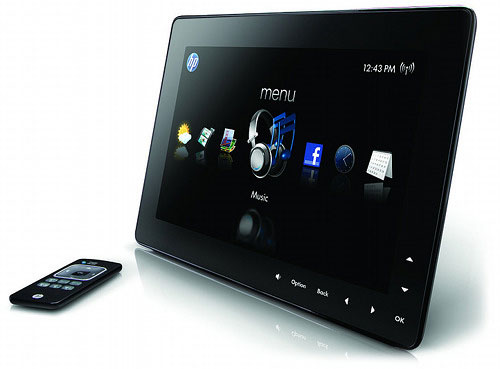 Hewlett-Packard is ramping up for the end-of-year buying season with its new consumer-friendly DreamScreen, a new device that looks like a photo frame—and, indeed, can be set on an end table and be used to display images. But the DreamScreen aims to be much more than that: it can stream music, play video, tap into Web-based information sources, and even let people keep up with their social networking, becoming a living-room friendly digital media hum without the need for a full-blown PC.
Hewlett-Packard is ramping up for the end-of-year buying season with its new consumer-friendly DreamScreen, a new device that looks like a photo frame—and, indeed, can be set on an end table and be used to display images. But the DreamScreen aims to be much more than that: it can stream music, play video, tap into Web-based information sources, and even let people keep up with their social networking, becoming a living-room friendly digital media hum without the need for a full-blown PC.
“Constant, always-on access to friends, information and entertainment is a common expectation today,” said HP Personal Systems Group’s worldwide marketing VP Satijiv Chahil, in a statement. “With HP DreamScreen, social media, web services, and digital entertainment can be enjoyed in more areas of the home.”
The DreamScreen will be available in 10- and 13-inch sizes sporting an 800 by 480-pixel display. The systems offer 2 GB of onboard memory for photos and video and a multi-in-one media reader for loading up the onboard storage—users can also hook up USB devices. But there the DreamScreen really shines is by latching onto a home network via 802.11 Wi-FI networking or wired Ethernet: then the unit can tap into things like Pandora streaming music, HP’s Snapfish photo service, and pick up up dates from Facebook. Once attached to a network, HP says users can load media onto the DreamScreen via simple drag and drop from a PC. The DreamScreen features built-in speakers, can play digital video (MPEG-1, MPEG-2, MPEG-4, and H.264 formats), and features a handful of utility applications that pull in weather forecasts, display calendars, and offer clock functions.
The 10-inch version of the DreamScreen should be available online shortly and through selected retailers for about $250 in mid-October; the 13-inch version will arrive later for roughly $300.


